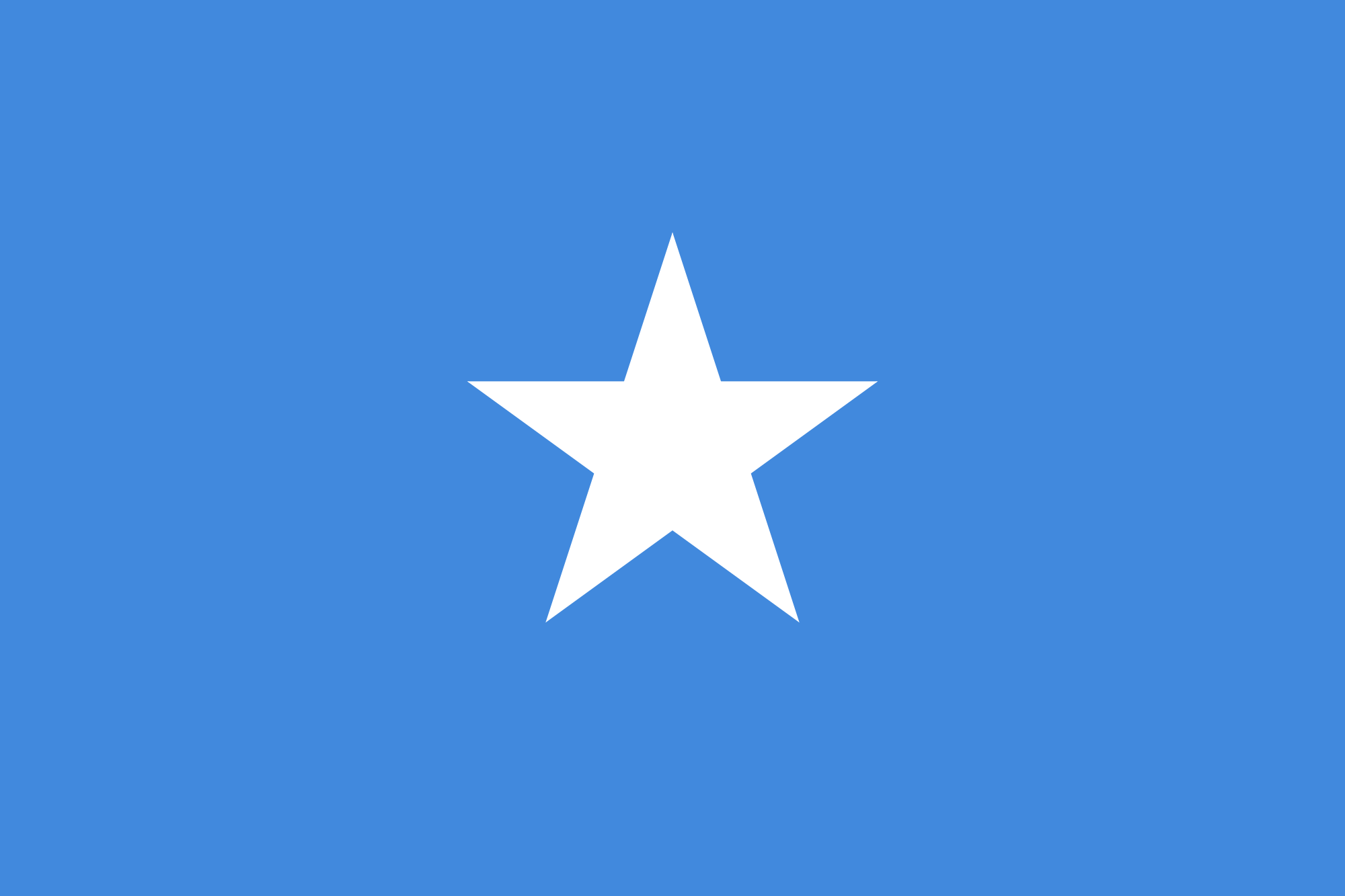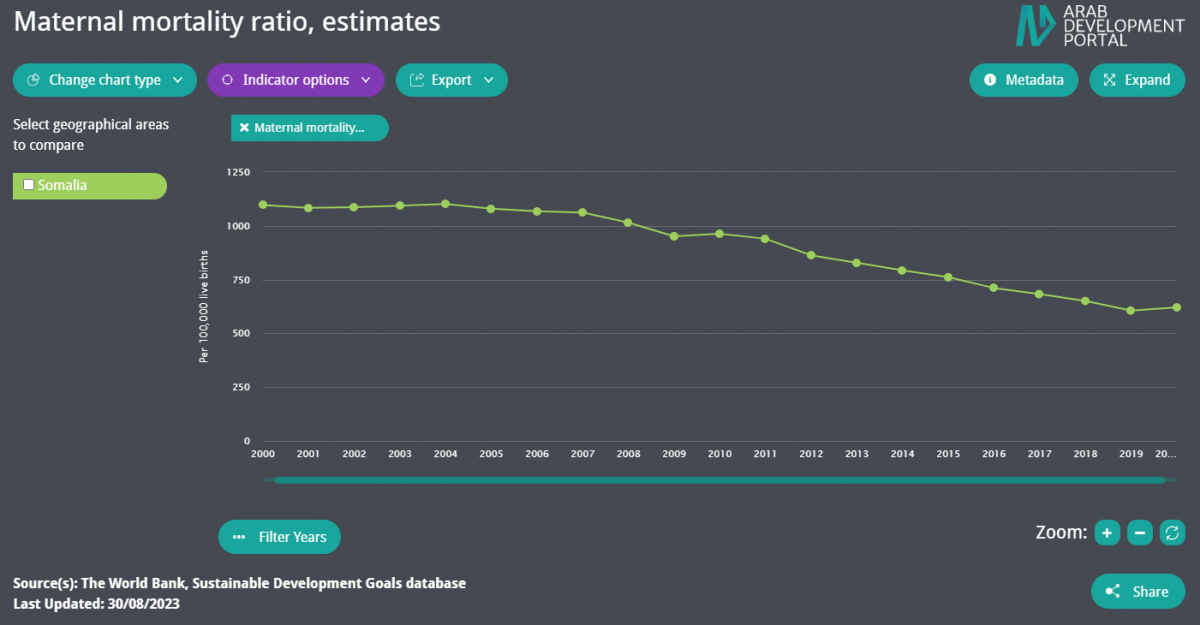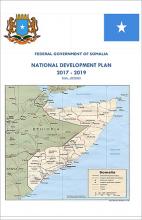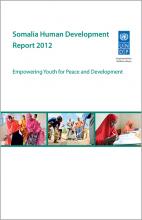 Somalia
Somalia
Somalia is a coastal country in Eastern Africa with a population of 17.3 million in 2022. The Somali population is the youngest in the Arab region with 67 percent of the total population below the age of 24. The fertility rate is high at 6.2 births per woman.[1] The majority of the population is rural, with 47.3 percent of the population living in urban areas as of 2022.[2]
The ongoing armed conflict and violence in Somalia following the collapse of the central government in 1991 and the cyclical climatic shocks are the drivers of one of the most challenging and enduring humanitarian crises in the world including repeated waves of traffic famine. Alarming protection and humanitarian distress in Somalia persist with a rising number from 4.2 million in 2019 to 8.3 million people requiring humanitarian assistance and protection in 2023 including 1.5 million acutely malnourished children below 5.[3] More than 3.8 million people are internally displaced due to many factors including recurring climate shocks, armed conflict, and political and socio-economic components with women and children making up more than 80 percent of internally displaced persons and face significant protection risks. Furthermore, over 3.7 million Somalis are in a food crisis/emergency in 2023.[3]
One of the world’s most complex and protracted conflicts continues to inflict significant damage to an already weak economy. Economic activity in Somalia centers on the services and agriculture sector, which experienced near-full collapse with crop failures, water shortages, and increased livestock mortality. However, Somalia’s economy remained resilient despite drought and sporadic terror attacks. Somalia’s real GDP growth rate reached 2.4 percent in 2022 and is forecasted to register 2.8 and 3.7 percent in 2023 and 2024.[4] Total public debt is 3.3 billion USD, or 40.8 percent of GDP at end-2022—nearly all of which is external.[5] The debt burden hampers the government’s capacity to reduce widespread poverty.
Nonetheless, COVID–19 threatened the already fragile and ill-equipped health system that has been nearly destroyed. Children and women are particularly exposed to high health risks. Somalia had the second world’s highest under-five child mortality rate in 2021 with 111.8 per thousand children and the 6th world’s highest maternal mortality ratio in 2020 with 621 deaths per 100,000 live births. In addition, Female Genital Mutilation/Cutting (FGM/C) prevalence was as high as 99.2 percent in 2020.[6]
Somalia has the world’s lowest school gross enrolment rates with only 9 percent of children enrolled at the primary education level and 5.5 percent at the secondary level in 2021.[6]
This overview was last updated in November 2023. Priority is given to the latest available official data published by national statistical offices and/or public institutions.
Sources:
[1] Population Division of the Department of Economic and Social Affairs of the United Nations Secretariat. 2023. World Population Prospects. [ONLINE] Available at: https://population.un.org/wpp/ [Accessed 23 October 2023].
[2] Population Division of the Department of Economic and Social Affairs of the United Nations Secretariat. 2023. World Urbanization Prospects. [ONLINE] Available at: https://population.un.org/wup/ [Accessed 23 October 2023].
[3] United Nations Office for the Coordination of Humanitarian Affairs. 2023. Somalia. [ONLINE] Available at: https://www.unocha.org/somalia [Accessed 27 November 2023].
[4] International Monetary Fund. 2023. World Economic Outlook. [ONLINE] Available at: https://www.imf.org/en/Publications/SPROLLs/world-economic-outlook-databases#sort=%40imfdate%20descending [Accessed 24 October 2023].
[5] International Monetary Fund (IMF). 2023. Somalia Debt Sustainability Analysis. [ONLINE] Available at: https://www.elibrary.imf.org/view/journals/002/2023/187/article-A002-en.xml [Accessed 27 November 2023].
[6] The World Bank. 2023. World Development Indicators. [ONLINE] Available at: https://databank.worldbank.org/data/source/world-development-indicators [Accessed 23 August 2023].
Data Highlights
-
Somalia had the second world’s highest under-five child mortality rate in 2021 with 111.8 per thousand children and the 6th world’s highest maternal mortality ratio in 2020 with 621 deaths per 100,000 live births down from 1097 deaths per 100,000 live births in 2000


